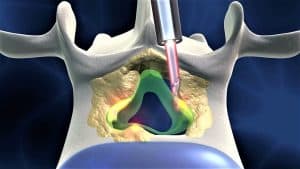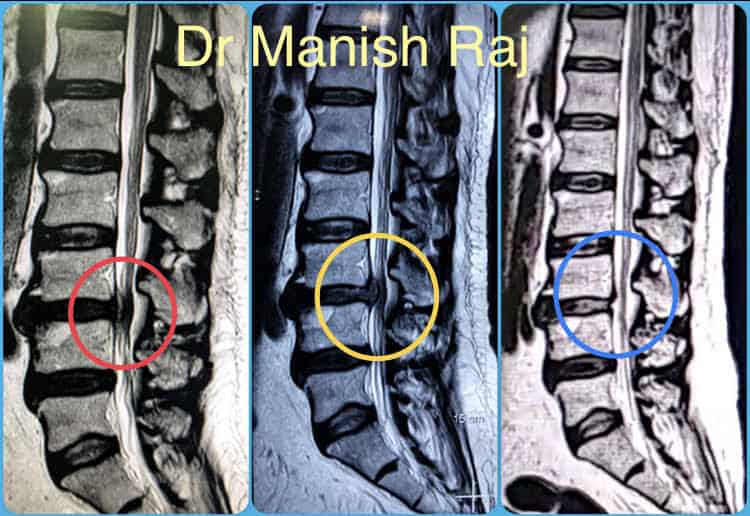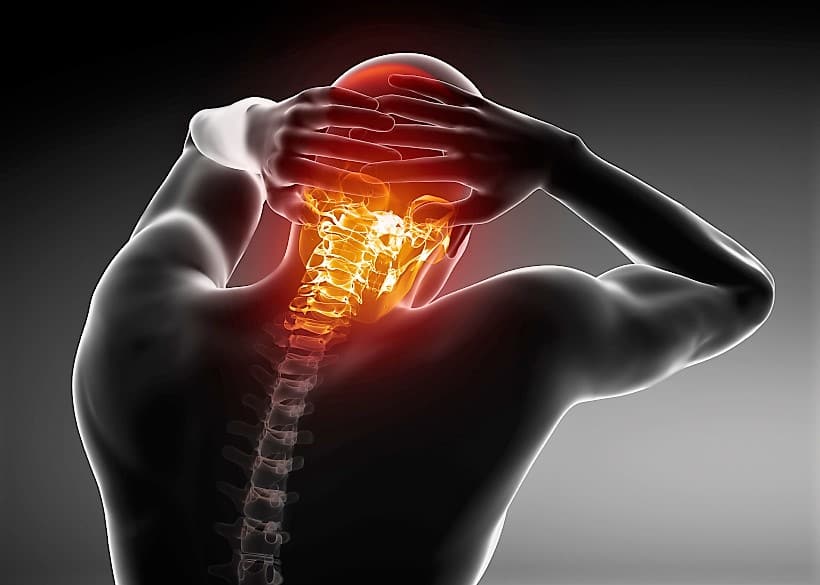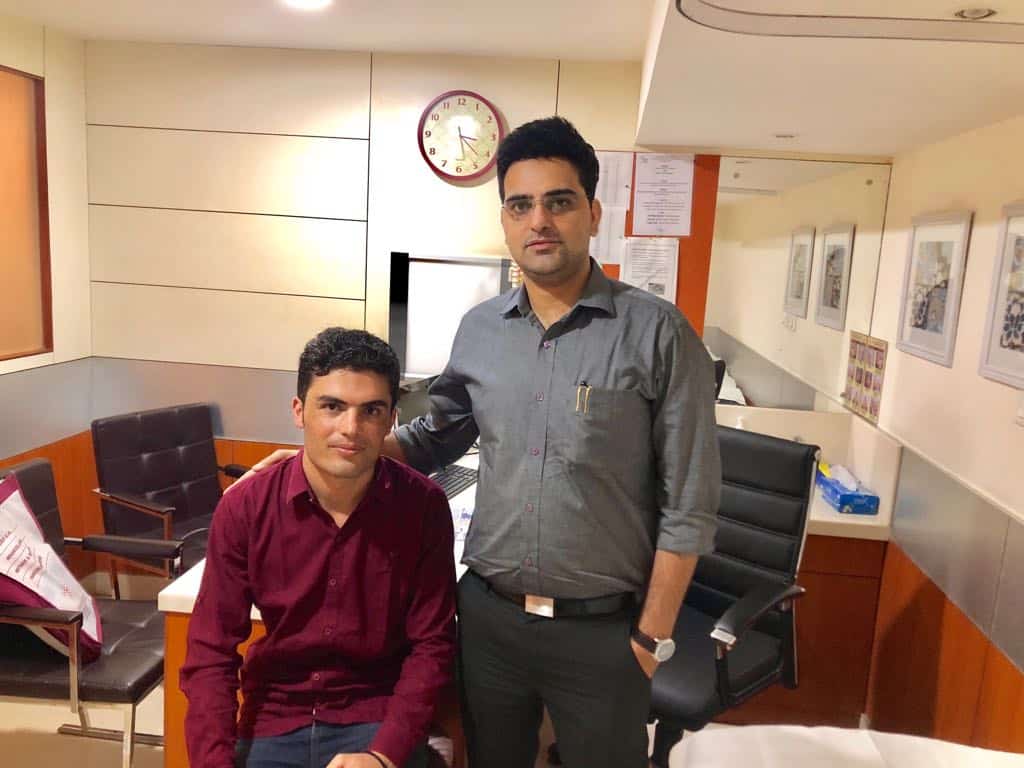Failed Back Surgery Syndrome (FBSS) also known as Post Laminectomy Syndrome (PLS) is not a diagnosis, but rather a general term to describe a variety of chronic pain syndromes experienced by patients after open spine surgery (1). The exact cause of Post-Laminectomy Syndrome is unknown, however one prominent theory points to:
- Removal of lamina (spine bone) causing muscles to proliferate & formation of adhesions with unprotected dural membrane since many important structures like ligamentum flavum is removed in open spine surgery (Laminectomy). These adhesion may also involve nerve roots & give rise to severe pain(3).
- Arachnoiditis or inflammation within the protective layers of the spinal cord.
- Surgical intervention at the wrong spinal level (the operated level may not be source of pain)

Because of the diversity of potential causes and the variety of different chronic pain syndromes that can result as a consequence of FBSS, the condition can be a difficult one to treat.
Failed Back Surgery Syndrome Diagnosis and Treatment
Diagnosis of failed back surgery syndrome is made following surgery, as a doctor recognizes a developing pattern of chronic pain and poorer surgical outcomes than expected. A physician may order laboratory or imaging studies to identify possible inflammation or other structural abnormalities where the lamina was removed. Treatment options are situation-dependent and must be tailored to each patient individually. Some of the possible treatment options include (1,4,5):
- Endoscopic Discectomy : Not choosing open spine surgery whenever possible is best way to avoid failed back surgery. Many advanced minimally invasive approaches are available like Endoscopic discectomy, which not only give better results but also avoids failure like FBSS.
- Racz Procedure / Adhesiolysis is the disconnection of fibrotic scar tissue after surgery. During adhesiolysis, the scar tissue can be mechanically removed with special instruments or chemically removed via injection of saline or other solutions.
- Spinal cord stimulation via placement of electrodes into the epidural space of the spinal cord thought to be associated with the pain may be appropriate for some patients. The electrodes apply an electric current to interfere with pain conduction pathways. While the outcomes of spinal cord stimulation can be good, there is a high rate of complications associated with electrode implantation.
- Intrathecal infusion pump are implanted delivery devices which deliver one of several drugs to the spine. There are several pain control receptors on the spinal cord and these medications work directly on these receptors to block pain. It is used to deliver medications directly to the spinal cord.
- Opioids can be used for pain management, however responses are unpredictable. The side effects of long-term opioid use can be serious, and long-term outcomes aren’t well understood. It is strictly monitored by physician.
Failed back surgery syndrome can affect patients long-term, and significantly affect an individual’s lifestyle and ability to return to work. With proper treatment, however, pain can often be reasonably managed.
Refrences
- Rabb, C. (2010). Failed back syndrome and epidural fibrosis. The Spine Journal. Vol 4(4), 486-488.
- Nidus Information Services. (2011). Laminectomy. Patient Handouts. MD Consult Web site, Core Collection.
- Rosenbaum, R.; Ciaverella, D. (2008). Disorders of Bones, Joints, Ligaments, and Meninges. Bradley: Neurology in Clinical Practice, 5th Ed. MD Consult Web site, Core Collection.
- Chou, R. (2011). Subacute and chronic low back pain: Surgical treatment. In: UpToDate, Basow, DS (Ed), UpToDate, Waltham, MA.
- Bajwa, Z.; Smith, H. (2011). Overview of the treatment of chronic pain. In: UpToDate, Basow, DS (Ed), UpToDate, Waltham, MA.









